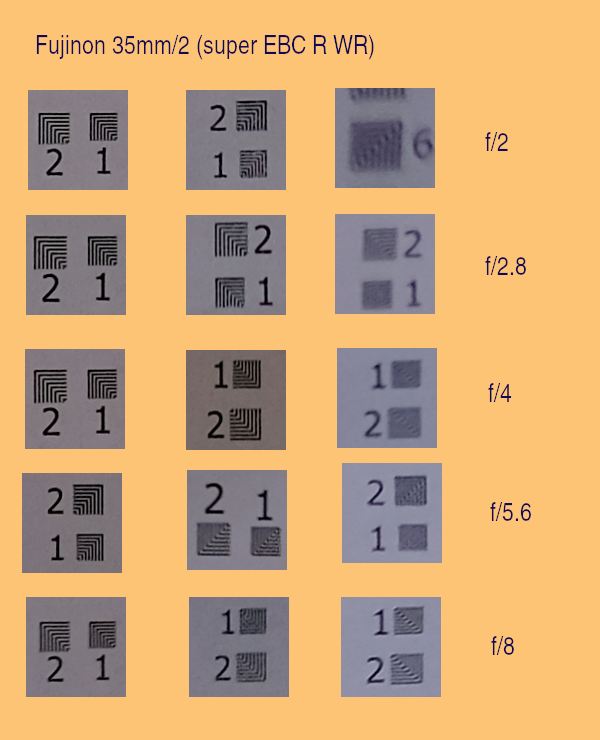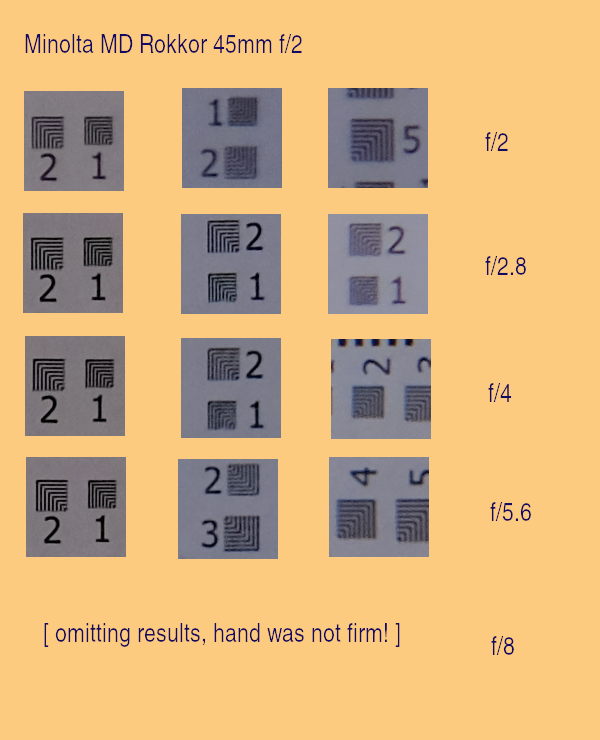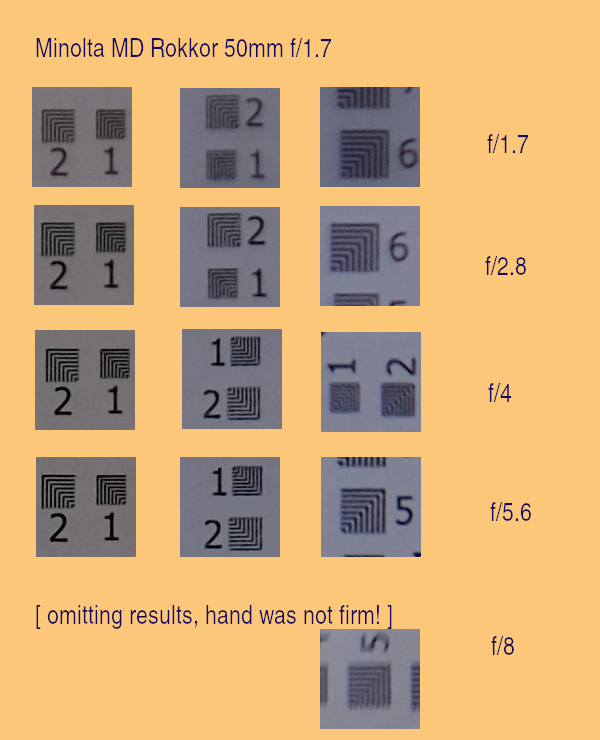Some sharp primes with a modern APS-C sensor
NOTICE: I am not an English speaker. Some phrases in this text may be incorrect or sound odd, but I think that this sort of article must reach the widest public: not many are interested in trying legacy lenses on modern, digital cameras, and if I were writing in Italian, the not-so-many would become a few ones!
Following my other articles about some legacy lenses, and especially a few, cheap wide-angles and more (try the site index), today I am comparing the portrait-distance sharpness of three standard prime lenses, one modern auto-focus Fujinon 35mm meant for APS-C and two Minolta MD Rokkor (45mm and 50mm) from the past, with manual focus only. The 35mm is the shorter, but I'd not call it an apple-to-oranges comparison, just mind the difference.
The full names are:
- Fujinon XF 35mm f/2 R WR
- Minolta Rokkor MD 45mm f/2
- Minolta Rokkor MD 50mm f/1.7
Notice: this is going to be a very short review!
Quick analysis
I must say that this trio can easily dispell some assumptions usually given for granted, first of all that auto-focus is more precise than manual-focus.
Also, given for granted that good prime lenses intended for APS-C digital sensors are usually better than legacy lenses is not a good idea.
Finally, the presumption that legacy lenses are much better in terms of mechanics doesn't stand here.
But let's go to the facts...
These three items are well-built, but also considering the auto-focus facility it must accomodate in a compact shape, the (contemporary) Fujinon stands out, as it is excellent like most lenses from the Japanese vendor.
Nothing to say about the Rokkor 50mm, too, while the 45mm has some parts that aren't on par with the barrel, namely the aperture ring, that is made of plastic, but it's apparently very solid.
So don't be deceived by a few glitches, we're talking high-quality anyway.
The Minolta MD Rokkor 45mm f/2 is somewhat a peculiar lens: very compact, we'd not call it a "pancake" by today standards, but it's almost there. Adapted for use with the Fuji XT-20, this advantage is reduced but still perceivable. And in spite of the limited dimensions, it has something to say when it comes to performance and is not bad even at f/2; this explains why it became a favourite among those who used it.
Focus is smooth and pleasant with all the three glasses, though the feeling with the Fujinon is completely different, the movement is much smoother because of the electronics that govern the actual adjustment. Though shorter, again, the 45mm is OK and the depth of the ring is not an issue.
From the point of view of optical performance, I must say that the Fujnon lens design sports a behaviour that you'd rather expect from a wide-angle, whereas the two Rokkor are more predictable and "regular".
As you can see from the crops (they're 1:1), the Fujinon exhibits an astounding performance in the center since wide-open, where the other two take 1 stop or more to catch up.
In the middle of the frame, the situation is similar but the two Rokkor's catch up faster. I can say that at f/2.8 the three lenses are very usable.
On the contrary, extreme border performance of the Fujinon XF is very poor (the fall is sharp and almost abrupt), while the Minolta glasses degrade smoothly to the borders and never become that bad; this is obvious since they are full-frame lenses. The Fujinon seems to suffer from spherical aberrations and also vignetting (the camera has corrected the image, it's what Fuji does when the lens is known to the firmware).
Finally, it apparently hits its best at f/4 for the center and f/5.6 for the borders, while the Rokkors steadily improve till f/5.6 where the 50mm stretches its legs, and I'm sure that they peak at f/8, but -stupid me- the shots at f/8 suffer from a bit of hand-shaking.
In a word, there is no clear winner here, but a few considerations are mandatory.
I am not a fan of the Fujinon 35mm, I think it lacks character and also 35mm is far from being my favourite length. On APS-C, it is too short for portraits and a bit too long for street photography, probably it made more sense on full-fame cameras.
I must say that it is very sexy on the Fuji-X cameras and it sport a real aperture ring, something I love to have. If 35mm is a length you like, it has some very strong points, including the weather-proof treatment.
As for performance, if you don't mind about borders and aberrations in the corners, the 35mm also gives the advantage of auto-focus and a remarkable contrast where it is sharp.
Viceversa, for a better uniformity to the edge, pick the Rokkor lenses.
One other reason you may want the legacy items is that they can be adapted for most modern cameras and come very cheap, especially these two. If you have more cameras from different vendors (I have Fujifilm and Pentax, for instance), it can be very handy and a lot less expensive, especially if you want some lenses just for fun but not because they must be "the" lens in your set.
The crops
The images contain 100% crops from the photos.
All lenses has been tested twice for each aperture (refocusing each time).
So, for each aperture, I picked the best crop for the center and the border.
For the Fujinon, I took one auto-focus and one manual-focus round.



| Back to the site index | ||
| Do you love Italy? Check my little site, I hope to find the time to make it grow! | ||